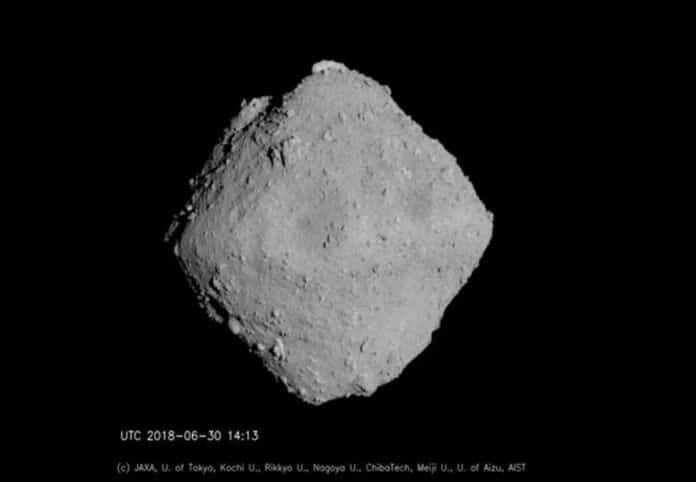In December 2020, the Hayabusa2 spacecraft brought back the samples of the carbonaceous asteroid Ryugu to Earth. A new study sheds light on these samples; they discovered areas with a massive accumulation of rare Earth and unexpected structures.
As part of international research collaboration, Geoscientist Professor Frank Brenker and his team from Goethe University Frankfurt analyzed the chemical composition of the material in a three-dimensional and entirely non-destructive way.
Without complicating sample preparation, scientists analyzed samples with a resolution of under 100 nanometres using a method called Synchrotron Radiation-induced X-Ray Fluorescence Computed Tomography (SR-XRF-CT). The resolution expresses the smallest perceptible difference between two measured values.
Ryugu asteroid, due to its high carbon content, promised to deliver pervasive information about the origin of life in our solar system. Ryugu is made up of CI-type material, according to the investigations of the scientists and their Frankfurt counterparts on 16 particles. In terms of chemical composition, these are fairly similar to the Sun.
The amount of CI-material altered or contaminated when it entered Earth’s atmosphere or upon contact with our planet has only sometimes been identified on Earth thus far. The study supports the theory that Ryugu descended from a parent asteroid formed in the outer solar nebula.
Until now, scientists had assumed that there was hardly any transport of material within the asteroid due to the low temperatures during the formation of the CI material in the early days of the solar system and, therefore, scarcely any possibility for a massive accumulation of elements.
Through SR-XRF-CT, scientists found a fine vein of magnetite — an iron oxide mineral — and hydroxyapatite, a phosphate mineral, in one of the grains of the asteroid. Other scientists established that the structure and other magnetite-hydroxyapatite regions in the Ryugu samples must have formed at a surprisingly low temperature of under 40 °C. This finding is fundamental for interpreting almost all the results that the analysis of the Ryugu samples has generated and will generate in the future.
Brenker said, “In areas of the samples containing hydroxyapatite, scientists additionally detected rare earth metals — a group of chemical elements indispensable today for alloys and glassware for high-tech applications, among others.”
“The rare earths occur in the hydroxyapatite of the asteroid in concentrations 100 times higher than elsewhere in the solar system. What’s more, he says, all the elements of the rare earth metals have accumulated in the phosphate mineral to the same degree — which is also unusual.”
“What’s more, all the elements of the rare earth metals have accumulated in the phosphate mineral to the same degree — which is also unusual. Brenker is convinced: This equal distribution of rare earths is a further indication that Ryugu is a very pristine asteroid that represents the beginnings of our solar system.”
Journal Reference:
- T. Nakamura, M. Matsumoto, K. Amano, et al. Formation and evolution of carbonaceous asteroid Ryugu: Direct evidence from returned samples. Science, 2022; DOI: 10.1126/science.abn8671
